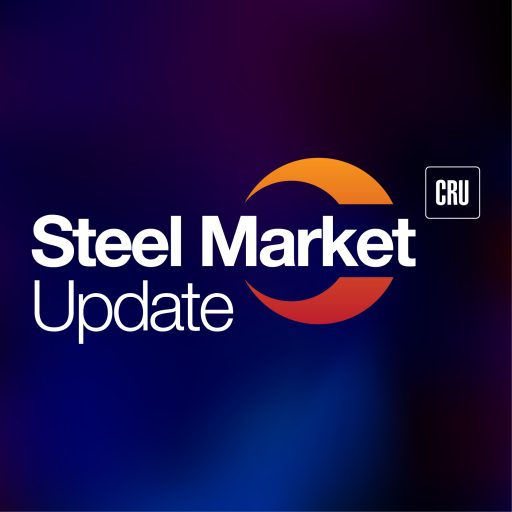Analysis

November 6, 2025
HR Futures: Market waits with bated breath for next driver
Written by Gaby Ain
After another eventful week in the steel market, one in which stabilization further solidified. And now the market has entered into a bit of a quiet recalibration, the kind of pause that feels like a held breath.
Prices have stopped falling. Lead times have stretched just enough to create firmer footing. The urgency of downside risk has faded, but maybe (not quite yet) moved on.

The HRC futures curve captures this moment. In early October (orange, the date of my last column), the front end was still searching for a floor. By late October (blue, one week ago), the market had accepted higher pricing. And near-term support is real, made so by supply coming more into balance via disciplined production, lean inventories, and reduced import pressure.
The rally into December and January was orderly and convincing, cyclical. Now, early November (white, today), the curve has flattened. The rally hasn’t reversed. But it hasn’t extended either. The front-end move is seemingly done for now.
The mid-curve sits steady in a tight band around the upper $870s-$880s. The market has found its footing, but not its stride. The curve feels a bit unresolved, waiting for a new catalyst (or maybe proof) – whether that be a scrap move, cost push, restocking, supply tightening, etc., to determine the next move.
We have seen this dynamic before – moments where the market steadies, the curve pauses, and positioning recalibrates not because the thesis has changed but because conviction has softened rather than strengthened. In such periods, the futures market often becomes the pressure valve while the physical market simply holds its ground. It is a familiar pattern: the market exhaling rather than making a statement.
From here, the path branches. If even modest restocking emerges, the front of the curve likely lifts again. And if buyers remain cautious into year-end, the curve holds this flat, balanced shape. But if demand softens, the futures curve releases pressure back into spot. All paths one could easily make a good argument for.
This is not a demand-led recovery, though steel markets are often supply-led to begin with. Still, demand is playing a role in the fickleness of the market. Buyers remain cautious and continue to make purchases largely on an as-needed basis. Downstream sentiment has improved, but that optimism has not yet translated into stronger activity.
For now, an honest characterization of the present moment is simply that a bottom has formed, the market has stabilized, and sentiment is better – landing us more in an exposition phase than an inciting incident. A signal to watch for now is whether mill inquiry activity and lead times extend meaningfully into late December. Overall, steel is steady, firm. The market has exhaled and now waits with bated breath.
Disclaimer
The content of this article is for informational purposes only. The views in this article do not represent financial services or advice. Any opinion expressed by Flack Global Metals or Flack Capital Markets should not be treated as a specific inducement to make a particular investment or follow a particular strategy, but only as an expression of his opinion. Views and forecasts expressed are as of date indicated, are subject to change without notice, may not come to be and do not represent a recommendation or offer of any particular security, strategy or investment. Strategies mentioned may not be suitable for you. You must make an independent decision regarding investments or strategies mentioned in this article. It is recommended you consider your own particular circumstances and seek the advice from a financial professional before taking action in financial markets.







